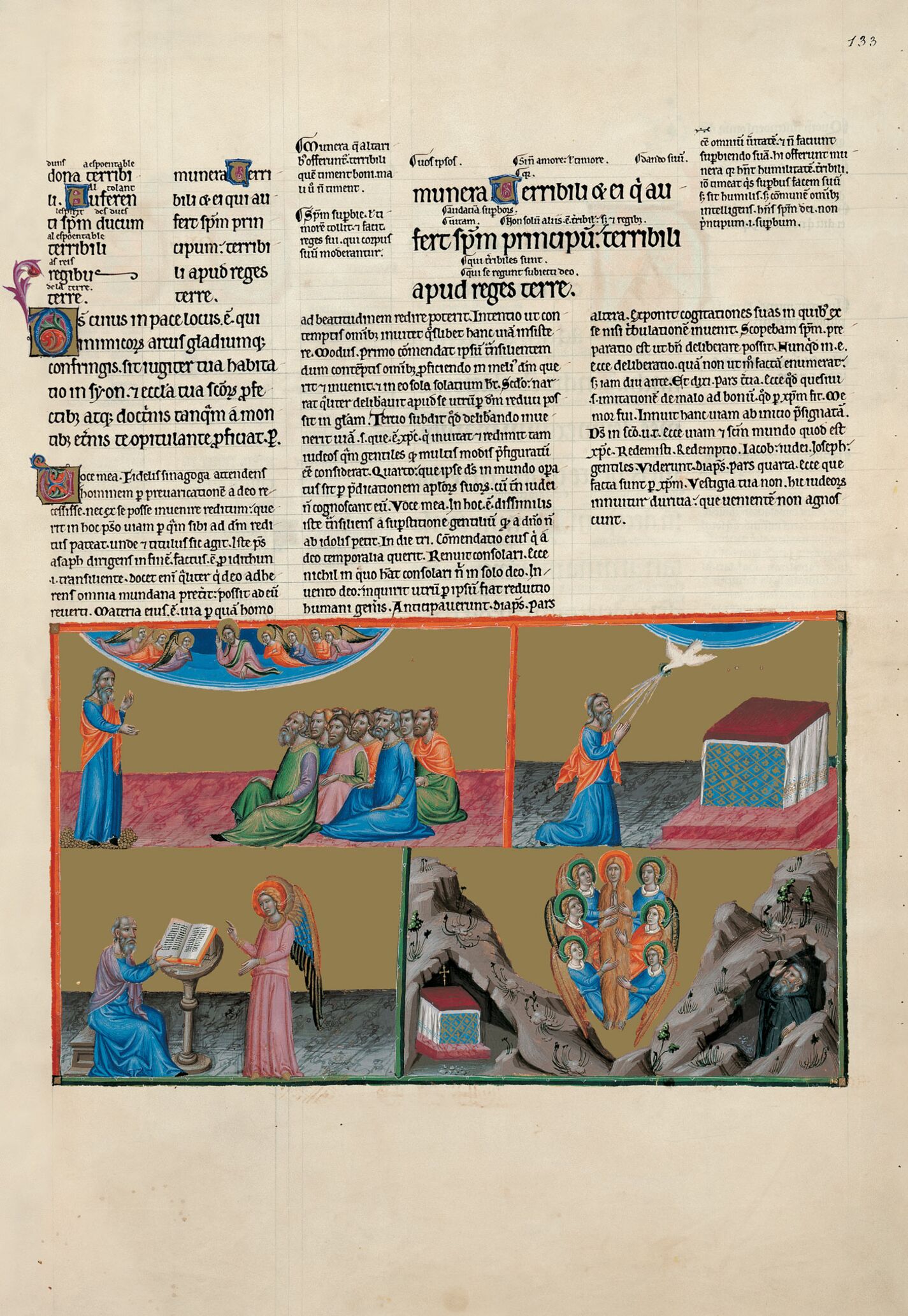Here again are four scenes with large spaces containing no figures, filled with splendid golden grounds. The first shows an old preacher standing on an unusual surface apparently consisting of small gold coins laid on a pink marble floor. A very small audience listens to his explanations conveyed according to God’s dictates. The man that could be identified as a psalmist or prophet treads on the riches and exhorts the audience to follow the paths identified by God. As elsewhere, Christ appears in the blue, semi-circular sky accompanied by angels at prayer or with folded arms, in this case seven, three on the left and four on the right, to shape the perspective and a certain degree of necessary asymmetry linking the heavenly group to their earthly interlocutor (v. 2, Voce mea ad Dominum clamavi: voce mea ad Deum, et intendit mihi. // I cried to the Lord with my voice; to God with my voice, and he gave ear to me). The psalm says that after night, day will come and that after the fight, consolation. The fatigue of those who preach and whose spirits fail will receive their reward (St Augustine, Enarrationes, III, p. 23), represented here in the form of a white dove with a nimbus in the following space. The same figure – dressed in the same garments, i.e. a blue tunic and orange cloak – prays and receives the strength of the Holy Ghost – who descends from the blue arch of heaven. The right side is occupied by a wide altar shown in perspective upon a pink granite platform that matches the deep red cloth laid upon the altar cloth leaving its white valence visible, with an embroidered, gold trim, and a blue front with a chequered decoration also in gold.
Another old man appears in the bottom band, now sitting in front of a lectern with a curious, rounded design, apparently wishing to show a large, open book with two columns written in an imaginary text whilst an angel standing upright points heavenward. This could be St Matthew and his gospel. The angel would be the symbol of the evangelist, who would also represent the other writers of the Gospels to whom the psalm refers, according to St Augustine (Enarrationes, II, p. 29). However, whoever the figure is, he has no nimbus. The last image shows the people who live away from the community, for some of their life at least. The scene chosen is the ascension of a Mary Magdalene completely covered by her blond hair, being raised to heaven by six angels whilst a hermit still inside his cave watches the surprising happening. The cave acts as a counterpoint for what must be Mary Magdalene’s room where the same altar depicted in the upper register can be seen with the addition of a cross. Masterfully scattered upon the rocks, shaded to suggest different reliefs and accidents, are occasional touches of foliage that highlight rather than conceal the aridity of the landscape. The unusual nature of the reward offered to the repentant sinner is in keeping with the words of the psalm which reflect the help or strength God gives his faithful perfectly.
